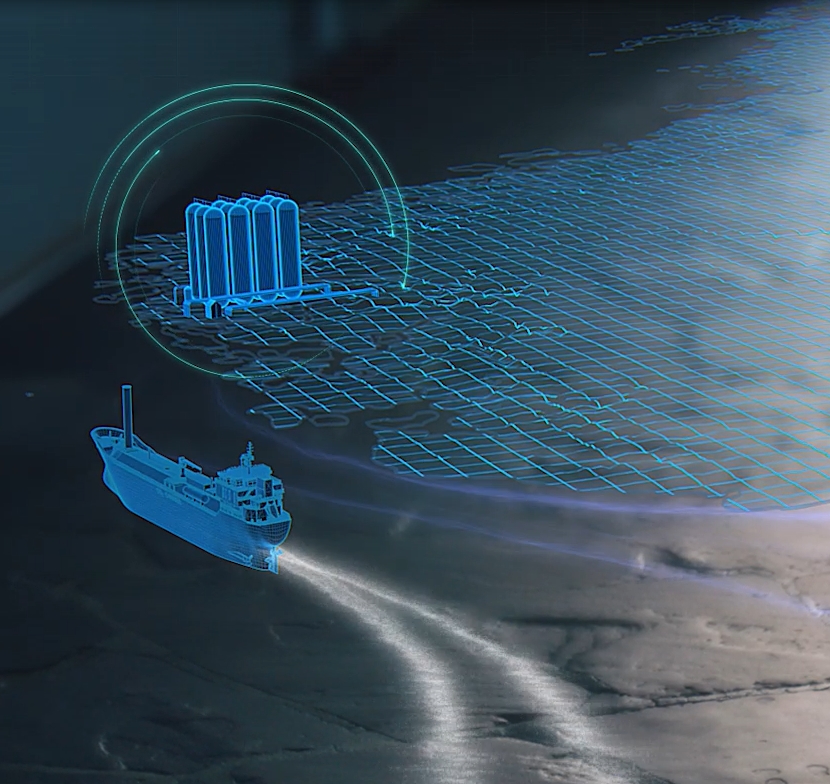Materials selection for CO2 transport and injection wells – O2 limits
Budget
5.8 MNOKCLIMIT Financing
48%Project number
617017Project partners
- • Institutt for Energiteknikk (IFE)
Project leader
Institutt for Energiteknikk (IFE)Project period
08/2017-12/2019Granted
08/03/2017Background and project purpose:
In CO2 injection wells, situations can occur where formation water and dense phase CO2 comes into contact with the well material. When large amounts of CO2 dissolve in the water phase it becomes more corrosive, which can provide high corrosion rates for carbon steel while stainless steel grades (13Cr and 22Cr) that are used in many wells have good corrosion resistance under these conditions. If the CO2 stream contains impurities, these will also dissolve in the water phase and further increase the corrosivity. One of the impurities associated with great uncertainty is O2, especially when the well is completed with 13Cr.
The first CO2 specification for the Peterhead project that was published in 2015 had a maximum limit of 1 ppmv O2. This limit was later increased (2016) to 5 ppmv after an experimental campaign at IFE. An O2 concentrations in the range 1 to 10 ppmv had been discussed in the Northern Light project prior to the start of the CO2WELLMAT project.
In order to achieve the target “Realization of storage potential in the North Sea”, it is important that the CO2 producers are offered a CO2 specification that is safe, but not unnecessarily conservative and expensive. The purpose of the CO2WELLMAT project has been to determine maximum limits for O2 for different injection well materials exposed to different temperatures and compositions of formation water. Only when acceptable O2 concentrations are documented, can a cost optimization be made where one looks at the choice of better (more expensive) well materials vs. construction and operation of treatment plants to remove O2 vs. demanding requirements for O2 monitoring and wasting of CO2 not complying with the agreed CO2 specification.
What was the project objective:
The goal of the CO2WELLMAT project was to determine limiting values for O2 under conditions relevant to the Northern Light project. When the project started, the only expected impurities were small amounts of water and a few ppmv O2, a reservoir temperature of 80 °C (Smeaheia) and up to 6.7 mmol / kgS alkalinity (about 400 ppmw bicarbonate) in the formation water. Later, when the injection area was moved to the Johansen field (higher temperature, 120 °C) and other types of impurities were included in the CO2 specification for the Northern Light project, it was discussed to include other impurities in the experiments as well. This was not possible within the framework of the project, due to the cost and time associated with the significant modification of the test setup which would have been required. It was agreed to partially compensate for the presence of other acidic impurities by reducing the alkalinity content of the aqueous phase.
What has the project done in terms of activities?
The main activities in the project have been:
Review of existing knowledge including data and experiences from oil-gas production / injection. An important focus area was how and to what extent experiences from oil-gas production / injection can be used in CO2 injection wells.
Determine experimentally the partitioning of O2 in water and dense phase CO2 for selected conditions and by use of models estimate values at different temperatures (10-120 ° C) and pressure (50-150 bar).
Determine experimentally O2 concentration for initiation and maintenance of pitting corrosion for different well materials exposed to different temperatures and O2 concentrations and in formation water with different buffer capacities (different pH).
Determine experimental conditions where chloride-induced stress corrosion (SCC) may occur.
What has the project achieved? Did the project achieve its objective?
The original project goals were achieved. A test set-up and test methodologies were developed that made it possible to run experiments under controlled pressure (100 bar), temperature (up to 120 ° C) and oxygen content (3-100 ppmv). Various types of 13Cr and 22Cr steels were tested. Generally, little material loss corrosion was found, but local corrosion (pitting) was observed on 13Cr under some conditions. No stress corrosion cracking was observed.
Acceptable corrosion rates and the final choice of pipe material will depend not only on the corrosion rate in oxygenated formation water, but also on the expected number of backflow incidents of formation water into the pipe as well as the duration of the water wet exposure.
Future plans:
During the project, the CO2 specification for the Northern Light project was expanded with more impurities and the possible consequences were discussed. Since only tests with O2 were made in the present project, it was proposed to start a new project in which the test matrix / database is expanded with more impurities and a larger temperature range.


